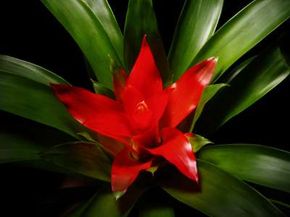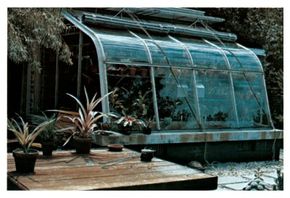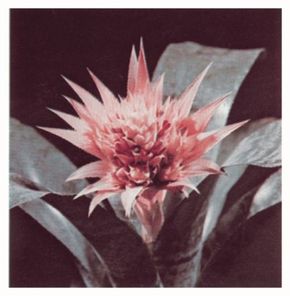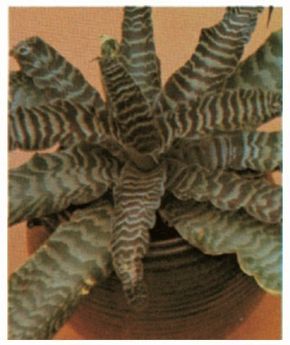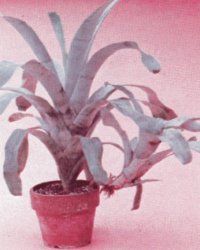Bromeliads are perennial monocotyledons -- plants that have one seed leaf like lilies or corn, rather than two seed leaves like roses or beans.
Their seeds have a food reserve, which means bromeliads can be grown like most other plants.
Advertisement
The pineapple was the first bromeliad to make an impression in Europe.
When Columbus came to the New World, he found this delicious fruit (which he thought looked a little like a large pinecone) being used as a symbol of hospitality throughout the Caribbean.
In the 17th and 18th centuries, growing pineapples became the thing among European upper classes; pineapples "sprouted" on furniture, teapots, pillars, and posts.
Except for a species of Pitcairnia which comes from Africa, the 2,000 bromeliad species are native to the tropical and subtropical regions of the Americas.
They grow from the southern United States to Argentina, from sea level to 14,000 feet. Bromeliads survive any temperature above freezing.
At maturity, bromeliads range in size from about an inch to 30 feet. They grow as individual plants or in large mats sometimes mixed with orchids and other plants.
Most bromeliads grow as stemless rosettes that can hold water (one of the exceptions is Tillandsia usneoides or Spanish moss).
Many of the bromeliads that we now cultivate grow on other plants, or on top of poles or telephone wires in nature. They are epiphytes and are not parasitic.
The terrestrial bromeliads, those that grow in the ground, are usually protected with thorns or spines along the edge of the leaves. The plants get their nourishment from rain, moisture in the air, and debris that collects in and around their leaves.
The plants have colorful foliage and brilliant bracts that keep their color for months. In most cases, the flowers grow on spikes from the center of the rosette.
In some cases, the flower spikes rise high above the leaves. In other cases, the spike is so short that the flowers bloom deep inside the vase.
In most bromeliads, each rosette blooms only once but can live a year or so after blooming. The plant sends up other rosettes (pups) which repeat the cycle.
Growing bromeliads for fun started in the mid-nineteenth century, often as a side interest for orchid growers whose collectors could not tell bromeliads from orchids and unintentionally gathered both.
Since that time, interest in bromeliads has been slowly increasing as more and more people find out how well they do in the modern home with high temperatures, dry air, and central heating.
When thinking about adding bromeliads to your indoor collection, keep in mind that not all bromeliads grow well indoors, but many do.
If you decide to grow bromeliads, start with a mature plant of an accommodating, tolerant variety that is beginning to bloom.
After you have some experience, you can begin growing the more difficult varieties and start propagating your own plants.
In this article, we will talk about how to care for bromeliad plants.
Temperature Requirements of Bromeliads will inform you of the temperature and air circulation preferences of bromeliads.
Light Requirements of Bromeliads will teach you which bromeliad plants require hours of natural light and which ones thrive indoors.
Watering Bromeliads is a great resource to find out just how wet your bromeliad needs to be.
Potting Bromeliads will teach you how to correctly pot your bromeliad and what type of potting media to use.
Fertilizing Bromeliads will tell you whether or not you should fertilize and how to correctly fertilize your bromeliad.
Bromeliad Care is a great resource for learning everything you need to know about care and maintenance of your bromeliad including how to keep pests and diseases away.
Propagating Bromeliads will teach you how to successfully seed or offshoot your plant.
Bromeliads are tolerant plants that can survive in a variety of temperatures. In the next section, learn about the temperature and air circulation requirements of bromeliads.
